Panoramic view of the castle of Eu
and the collegiate church of Notre-Dame
Oil on canvas
60 x 81 cm
Located in the French department of Seine-Maritime, the castle of Eu was initially a stronghold essential to the defense of the Duchy of Normandy. Of the medieval fortress, nothing remains to this day, the latter having been destroyed by Louis XI for fear that it would fall into the hands of the English.
The modern castle, as we know it today, was built in the second half of the 16th century for the marriage of the Duke of Guise with Catherine de Clèves, Countess of Eu. It was subsequently enlarged at the end of the 17th century by the Grande Mademoiselle, first cousin of Louis XIV. The castle then entered through the intermediary of successions into the descendants of Louis XIV. During the Revolution, the castle was seized and converted during the Empire into the senatorial palace of Rouen. It was at this time that the north wing was demolished. In 1811, the castle entered the domain of the imperial crown and the architect Fontaine was then commissioned to carry out some work for Napoleon. In 1814, during the first Restoration, the estate was returned to the Duchess of Orléans who passed the castle on to her son Louis-Philippe d'Orléans who became King of the French in 1830. Eu then became the favorite residence of the king who then launched a major campaign to modernize the castle, still under the guidance of the architect Fontaine. In 1848, the castle was seized again, only to be returned in 1871 to Louis-Philippe's grandson, the Count of Paris. The latter once again undertook major works supervised by Viollet-le-Duc. Unfortunately, in 1902, most of the central building was ravaged by fire. Three years later, the Orléans-Bragance couple, having bought the castle from their first cousin, began a campaign to restore the building. Occupied by the Germans during the Second World War, the castle was finally sold by the Orléans to the commune of Eu in 1964, which installed the town hall there and created a Louis-Philippe Museum.
The building is composed of a rectilinear main building flanked at its ends by two pavilions, the whole is built in the Louis XIII style composed of bricks and stones covered with slate attics.
We can also distinguish on our painting the collegiate church Notre-Dame-et-Saint-Laurent d’Eu. The only remaining building of an old abbey destroyed during the Revolution, this church was built at the very end of the 12th century, suffered no less than three fires during the 15th century, survived the wrath of the Revolution and was restored and embellished by Louis-Philippe in the 19th century.
The Gothic building facing east is in the shape of a Latin cross. The nave completed in the 13th century is composed of eleven bays with triple elevations at the end of which is the choir raised by several steps.
The collegiate church of Notre-Dame is today the parish church of Saint-Laurent.






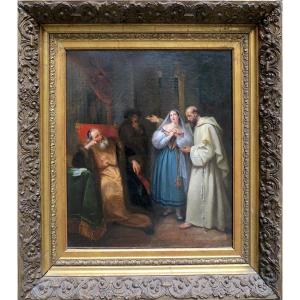






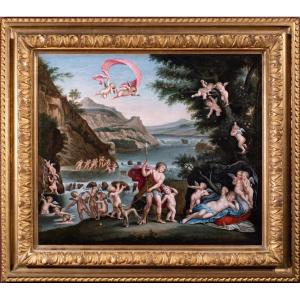
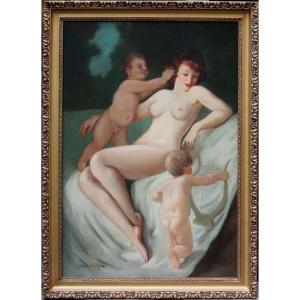
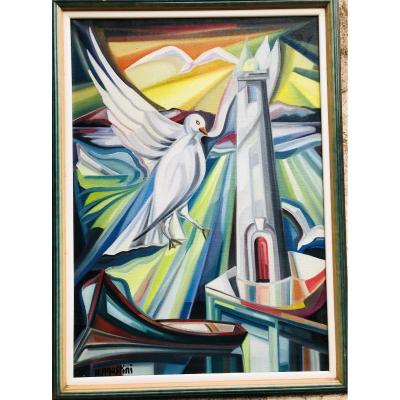
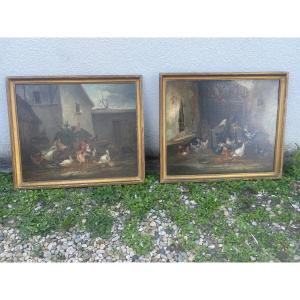



 Le Magazine de PROANTIC
Le Magazine de PROANTIC TRÉSORS Magazine
TRÉSORS Magazine Rivista Artiquariato
Rivista Artiquariato
